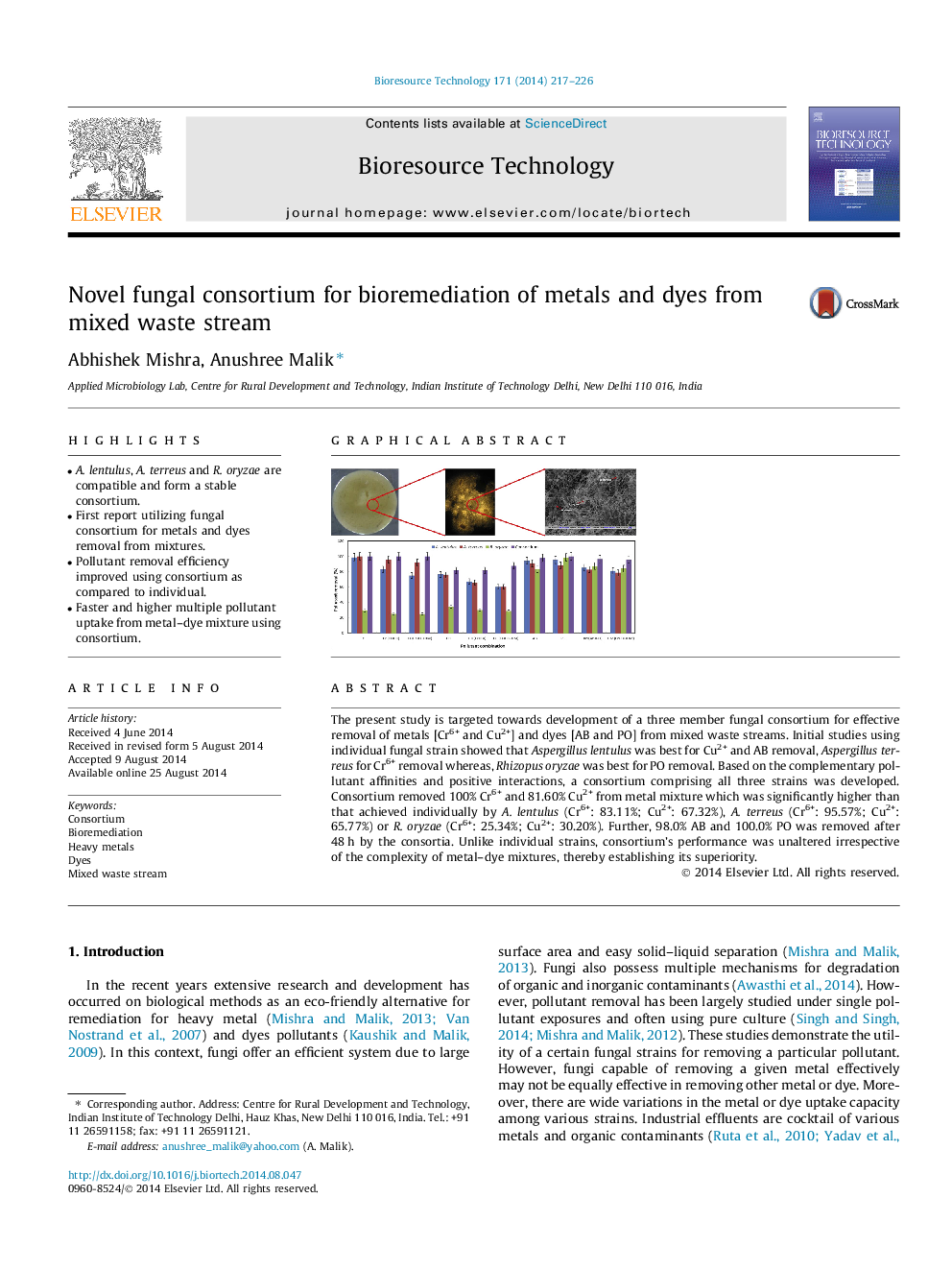| Article ID | Journal | Published Year | Pages | File Type |
|---|---|---|---|---|
| 680358 | Bioresource Technology | 2014 | 10 Pages |
•A. lentulus, A. terreus and R. oryzae are compatible and form a stable consortium.•First report utilizing fungal consortium for metals and dyes removal from mixtures.•Pollutant removal efficiency improved using consortium as compared to individual.•Faster and higher multiple pollutant uptake from metal–dye mixture using consortium.
The present study is targeted towards development of a three member fungal consortium for effective removal of metals [Cr6+ and Cu2+] and dyes [AB and PO] from mixed waste streams. Initial studies using individual fungal strain showed that Aspergillus lentulus was best for Cu2+ and AB removal, Aspergillus terreus for Cr6+ removal whereas, Rhizopus oryzae was best for PO removal. Based on the complementary pollutant affinities and positive interactions, a consortium comprising all three strains was developed. Consortium removed 100% Cr6+ and 81.60% Cu2+ from metal mixture which was significantly higher than that achieved individually by A. lentulus (Cr6+: 83.11%; Cu2+: 67.32%), A. terreus (Cr6+: 95.57%; Cu2+: 65.77%) or R. oryzae (Cr6+: 25.34%; Cu2+: 30.20%). Further, 98.0% AB and 100.0% PO was removed after 48 h by the consortia. Unlike individual strains, consortium’s performance was unaltered irrespective of the complexity of metal–dye mixtures, thereby establishing its superiority.
Graphical abstractFigure optionsDownload full-size imageDownload as PowerPoint slide
